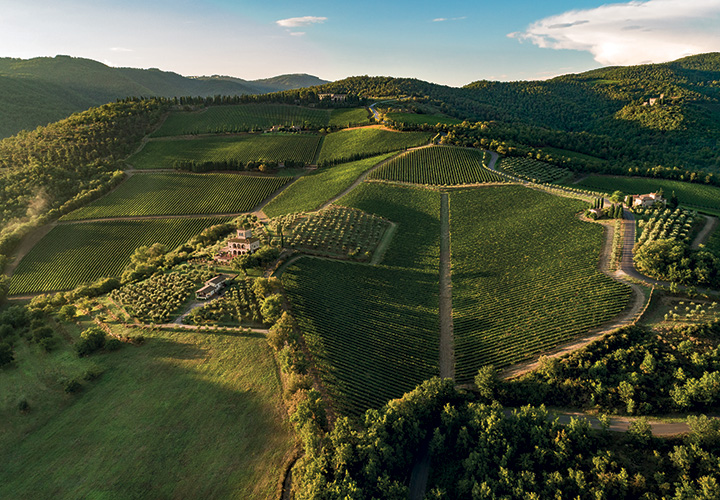The municipality of Gaiole in Chianti produces one of the world’s most famous wines, Chianti Classico DOCG, and offers wine tasting in Gaiole in Chianti Wineries . The Chianti Classico DOCG designation of origin is reserved for red wines produced in the oldest area of Chianti, spanning the provinces of Florence (30,400 hectares) and Siena (41,400 hectares).
Specifically, the municipalities of Greve in Chianti, Castellina in Chianti, Radda in Chianti, and Gaiole in Chianti are entirely part of the zone. Municipalities of San Casciano Val di Pesa and Tavarnelle are also partially included. The Chianti Classico production zone was the first in the world to be defined by law, with a proclamation issued in 1716 by the Grand Duke of Tuscany Cosimo III.
The proclamation specified the boundaries of the areas within which Chianti wines could be produced and established a body to oversee production, shipping, fraud control, and wine trade (a sort of precursor to the Consortia).
Until the 18th century, Chianti was produced using only Sangiovese grapes.
The practice of blending different grape varieties to improve the quality of the wine dates back to the early 19th century.
During that period, various blends were experimented with, but it was Baron Bettino Ricasoli, between 1834 and 1837, who popularized the composition he deemed most suitable for producing a pleasant, sparkling, and easy-drinking red wine.
This composition would later become the basis for the official composition of Chianti wine: 70% Sangioveto (the local denomination for Sangiovese). 15% Canaiolo. 15% Malvasia, and the application of the.Tuscan-style “governo” (drying) practice, which consists of taking a portion of the grapes, the healthiest and ripest—Sangiovese is preferable to. Canaiolo—harvesting them early and leaving the bunches to dry on racks for six weeks.
Once pressed, these grapes produce a must that, when added to the wine that has just finished fermenting and has burned all its sugars, triggers a second fermentation, which continues until spring.
The reference grape variety for the Chianti Classico DOCG remains Sangiovese, which must constitute at least 80% of the grapes used to produce Chianti Classico. Sangiovese is a grape very sensitive to external factors and has the ability to alter its aromas depending on the soil in which it is grown.
Chianti Classico has a floral bouquet of iris and violets typical of the sandstone soil of this area, which constitutes its characterizing organoleptic element, with aromas of wild berries that derive from the calcareous soil.
The denomination’s wines include Chianti Classico, Chianti Classico Riserva, and Chianti Classico Gran Selezione. Each wine is aged for a period of increasing length, limited to one year for the basic version, 24 months for the Riserva, and 30 months for the Gran Selezione.
WINE TASTING IN GAIOLE IN CHIANTI WINERIES
Chioccioli Altadonna
CHIANTI – Via Michelangelo Buonarroti 1/3 – Gaiole In Chianti (Si) . Winestillery, the first and only “Vinstilleria” in the world. We merged together a Winery and a Distillery to reinterpret an…
Casanova di Bricciano
CHIANTI – Loc. Casa di Bricciano – Gaiole in Chianti (SI). Rossi Brothers were born and raised among the vines, Since they have started walking, the vineyards have always been a..
.


Visiting the cellars is definitely an experience not to be missed.

BOOK YOUR WINE TASTING IN GAIOLE IN CHIANTI WINERIES
The wineries are ready to welcome you and offer you an unforgettable experience. Therefore, you can choose from various types of tastings, especially based on your needs. Wine tasting in Gaiole in Chianti Wineries are an unforgettable wine tourism and food and wine experience. We look forward to seeing you at the winery.
See wineries in other regions of Italy:
Piedmont, Lombardy, Veneto, Umbria, Friuli Venezia Giulia, Marche
